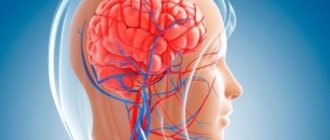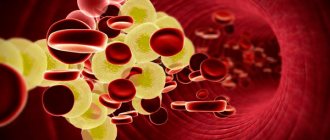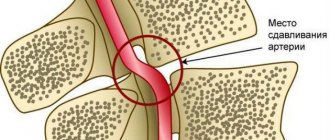Lipid metabolism disorders (dyslipidemia) affect the processes of absorption, transformation and metabolism of fats in the body. In addition to their energy function, fats are an important component of cell membranes, participate in the synthesis of hormones, transmit nerve impulses, and perform a host of other vital tasks. Therefore, a violation of lipid metabolism significantly affects the condition of the entire organism as a whole and can lead to the development of severe consequences.
Causes of dyslipidemia
- Nutritional – eating large amounts of animal and vegetable fats. The norm is set individually for each person, the average is from 0.8 to 1 g. fat per kilogram of body weight per day.
- Congenital disorders of lipid metabolism. They arise as a result of mutations in genes that are responsible for the processes of synthesis, breakdown, and transportation of fats. These mutations are passed on from generation to generation, so the disease can occur in young children for no apparent reason. Examples of genetic disorders of lipid metabolism are Gaucher disease, Tay-Sachs disease, and Niemann-Pick disease.
- Secondary disorders of lipid metabolism. Caused by other diseases that can affect the gastrointestinal tract, endocrine and enzyme systems, various internal organs (liver, kidneys).
Among the provoking factors that increase the risk of developing lipid metabolism disorders are bad habits (smoking, alcohol abuse), a sedentary lifestyle, excess weight, chronic stress, and taking hormonal medications.
How does lipid metabolism disorder manifest itself?
At first glance, it may seem that a disorder of lipid metabolism necessarily manifests itself in the form of excessive deposition of subcutaneous fat in various parts of the body. This symptom can develop, but it is not specific, but is characteristic of many other conditions. The clinical picture of dyslipidemia depends on whether the concentration of fats in the blood is increased or decreased. In the first case, the following symptoms are noted:
- the appearance of cholesterol deposits on the eyelids, abdomen, face, and limbs. Externally, they look like yellowish spots, slightly elevated above the surface of the skin;
- vascular atherosclerosis, which is accompanied by pain in the heart, breathing problems, changes in heart rhythm and other signs;
- enlarged liver and spleen;
- hypertonic disease;
- cholesterol ring along the edge of the iris.
If lipid metabolism disorders lead to a decrease in the amount of fat in the body, then symptoms such as hair loss and early graying, inflammatory skin lesions, nail separation, and menstrual cycle disruption in women occur.
Features of treatment
Various approaches are used to correct lipid metabolism disorders. If the problem was caused by nutritional reasons, then the patient is transferred to the hands of a nutritionist who develops a plan for proper nutrition and exercise. If lipid metabolism disorders appear as a result of concomitant diseases, then they begin to treat them. Some diseases cannot be treated (for example, diabetes), so the doctor develops an individual list of recommendations that will help normalize lipid metabolism and improve the patient’s quality of life.
Treatment of dyslipidemia
Treatment of dyslipidemia is complex and includes:
- Drug therapy - fibrates, vitamins, statins and other drugs that correct lipid metabolism disorders;
- Non-drug treatment - weight normalization through fractional meals, dosed physical activity, limiting alcohol and smoking, and stressful situations.
- Diet therapy - foods rich in dietary fiber and vitamins are recommended (vegetables, cereals, fruits, beans, low-fat lactic acid products); fatty and fried meats are not allowed.
If lipid imbalance is a secondary pathology resulting from exposure to negative factors or any disease, NEARMEDIC cardiologists prescribe therapy aimed at timely detection and treatment of the underlying disease.
Dyslipidemia develops over years and requires equally long-term treatment. You can prevent further disturbances in lipid metabolism by strictly following the recommendations of doctors: move more, watch your weight, quit bad habits.
Contact your doctors on time!
In the early stages, stopping the pathological process is much easier. Timely therapy, elimination of risk factors and disciplined implementation of doctors’ recommendations significantly prolong and improve the lives of patients
Contact our clinics, do not delay your visit to the doctor. You will be consulted by experienced doctors, and you will undergo an expert examination using high-tech diagnostic equipment. Based on the results obtained, the cardiologist will prescribe competent treatment for dyslipidemia and recommend preventive measures.
To make an appointment with a cardiologist, call or fill out a request on the website.
Diagnostic methods
Before drawing up an examination plan, the doctor talks with the patient, determines the characteristics of his diet, finds out whether he is taking any medications, and whether there have been cases of lipid metabolism disorders in his relatives. After this, a comprehensive examination is prescribed, which may include the following methods:
- general and biochemical blood test;
- lipidogram (determination of cholesterol, high and low density lipoproteins);
- Ultrasound of internal organs;
- determination of hormone levels;
- anthropometry;
- ECG;
- ophthalmological examination, etc.
In order to identify defective genes that can lead to lipid metabolism disorders, genetic testing is prescribed. You can take it in medical genetics.
Symptoms of metabolic syndrome
When diagnosing MS, 4 parameters are distinguished:
- hypertension (high blood pressure);
- high blood sugar;
- obesity (waist circumference more than 102 cm in men and more than 88 cm in women);
- abnormal cholesterol levels (decreased high-density lipoprotein levels and/or increased triglyceride levels).
Each of these conditions is dangerous individually, but together they trigger a cascade of pathological processes and turn into a mortal threat to blood vessels and human life and health in general.
Doctors nicknamed this complex of diseases the “deadly quartet.” In fact, metabolic syndrome is not an independent disease. This is a group of symptoms that often occur together and increase the risk of other - even more severe - disorders.
Risk factors
- Elderly age. The older a person is, the higher the risk of developing metabolic syndrome, according to statistics.
- Ethnicity. Hispanics are at greatest risk for developing metabolic syndrome. But this does not mean that Russians do not suffer from this disease.
- Obesity. As already mentioned at the beginning, excess weight increases the chances of developing MS.
- Diabetes. The likelihood of developing metabolic syndrome increases if the patient had diabetes during pregnancy (gestational diabetes). A family history of type 2 diabetes is also a reason for close attention to your health.
- Other diseases. The risk of metabolic syndrome is higher if the patient has had fatty liver disease, polycystic ovary syndrome, or sleep apnea.
Alarming trends
Until recently, metabolic syndrome primarily affected older people (over 60 years of age).
The picture has changed significantly over the past 20 years. The dynamics have shown that this problem is getting younger and becoming relevant for the younger population. In some countries, the proportion of adults suffering from these symptoms reaches 25%. Metabolic syndrome has another name - “new world syndrome”. The fact is that mainly people who lead a sedentary lifestyle (and this applies to the majority of residents of large cities) and consume large amounts of fast carbohydrates and trans fats suffer from obesity and related pathologies. As a result, there is a worldwide surge in cardiovascular disease and diabetes.
Metabolic syndrome affects both developed countries (where high-tech production has eliminated the need for the population to move a lot) and developing countries (a large percentage of the population of which has to save on food and consume more fast carbohydrates - pasta, bread, potatoes, corn).
There is another trend in recent years. Women of reproductive age began to suffer from metabolic syndrome. What this is connected with is not entirely clear. Presumably, oral contraceptives may have a negative effect.
Just imagine: over the past 20 years, the number of people with metabolic syndrome in the world has increased by more than 100 million - that is, by a third.
The problem of childhood obesity, and with it childhood MS, is especially acute. Scientists link the increase in childhood obesity to frequent refusal of breastfeeding. Breastfeeding eliminates early introduction of complementary foods, which can lead to unhealthy weight gain. Protein and total energy intakes are higher in formula-fed infants, leading to increased infant weight. Formula feeding also slightly increases insulin levels, which in turn promotes fat deposition and the early development of fat cells (adipocytes).
Thus, rapid weight gain in infancy is associated with childhood obesity. Breastfeeding can help program a person to maintain a healthy weight as an adult.
Pathogenesis
Lipoproteins whose diameter is less than 70 nm pass through the vascular endothelium. ApoB-containing lipoproteins in the arterial wall become trapped and trigger a process whereby lipids are deposited in the wall. Low-density lipoproteins are oxidized and, together with monocytes, form the core of an atherosclerotic plaque. The active substances released during this process are involved in the proliferation of smooth muscle cells in blood vessels and the breakdown of collagen. In patients with high levels of apoB-containing lipoproteins, more particles are deposited, and the atherosclerotic plaque progresses faster. Over time, other particles are deposited in the vessel wall, and the atherosclerotic plaque, reaching a critical point, ruptures with the formation of a blood clot on the surface. It becomes the cause of blockage of the vessel with the development of angina or myocardial infarction .
Dyslipidemia develops with
insulin resistance .
Under conditions of increased insulin secretion with decreased tissue sensitivity to insulin, increased breakdown of fats into fatty acids occurs. The latter are delivered to the liver, where they produce low-density lipoprotein cholesterol. Dyslipidemia causes increased blood pressure. The role of very low-density and low-density lipoproteins in the development of vascular endothelial dysfunction has been proven, which causes disruption of the synthesis of nitric oxide and an increase in the production of the vasoconstrictor peptide endothelin-1. As a result, vasoconstriction occurs and systemic blood pressure increases. Primary hyperlipidemia type 1 is associated with a mutation in the lipoprotein lipase gene. A defect in this enzyme blocks the metabolism of chylomicrons and they accumulate in large quantities in the plasma. With reduced lipoprotein lipase activity, triglycerides are not broken down and severe triglyceridemia .
Procedures and operations
Patients in whom drug treatment is ineffective undergo extracorporeal removal of low-density lipids. Most often, this method is used for familial hypercholesterolemia (homozygous and heterozygous). These are hardware methods based on plasma filtration and plasma sorption. Other types of techniques are also used: immunosorption, heparin precipitation, plasmapheresis. During the procedure, lipoproteins are precipitated and removed by membrane filtration, and the plasma is returned to the patient. There are diseases for which plasmapheresis is used as the first line of treatment, while for others it is used as the second line or in combination with other treatments.
What are the reasons?
The main reason why metabolic syndrome develops is external factors: poor nutrition, low mobility.
These bad habits ultimately disrupt the normal functioning of adipose tissue and lead to insulin resistance. Metabolic syndrome has a hereditary predisposition, which, however, is also largely explained by external factors. People who grow up in the same family are more likely to have similar eating habits and attitudes toward exercise. If there is a huge amount of fast carbohydrates and fats on the parent’s table and few vegetables, herbs and fruits, the child develops an unhealthy relationship with food from childhood. It's the same with sports: a child is more likely to be active if he has active parents.
Diet
Diet for vascular atherosclerosis
- Efficacy: therapeutic effect after 2 months
- Dates: no data
- Cost of products: 1700-1800 rubles. in Week
DASH Diet
- Efficacy: therapeutic effect after 21 days
- Timing: constantly
- Cost of products: 1700-1800 rubles. in Week
Patients are prescribed a diet low in fat, simple carbohydrates and an increased intake of dietary fiber up to 40 g. In the diet of patients, the amount of unsweetened fruits and vegetables with a low starch content, vegetable oils, beans, nuts, chickpeas, soybeans, fish, whole grain products, low-fat yoghurts At the same time, red meat, processed meats and salt are reduced. The traditional diet for hypercholesterolemia is the DASH and Mediterranean . These diets are effective in reducing cardiovascular disease factors. The Mediterranean diet includes olive oil or nuts.
When following this diet, there is a 30% decrease in cardiovascular diseases. Canola, flax, corn, olive and soybean oils reduce LDL cholesterol levels.
The main points of nutrition for patients are:
- Avoiding consumption of trans fats.
- Limiting saturated fats (only 7% of them are allowed in the diet).
- Limiting the intake of cholesterol from food (less than 300 mg/day - one chicken egg covers the need for cholesterol).
- Reducing the amount of carbohydrates, it is advisable to completely eliminate simple carbohydrates from the diet. Carbohydrates have a neutral effect on low-density lipoproteins, but excessive consumption of highly refined carbohydrates indirectly (via insulin) adversely affects triglycerides and low-density lipoproteins.
- Reduce consumption of foods with cholesterol.
- Increase in dietary fiber, which has a hypolipidemic effect. Soluble dietary fiber, which is found in fruits, vegetables, legumes, and whole grain cereals, is effective in this regard. Coarse plant fiber (cabbage, lettuce, carrots, grapefruits, apples, pears) partially adsorbs cholesterol and also prevents the absorption of fats.
- Eating foods rich in phytosterols . Regular consumption of such foods reduces cholesterol levels by 10%. Phytosterols are found in corn, soybeans, lentils, peas, vegetable oils, beans, whole grains, pumpkin seeds, sesame seeds, pistachios, and walnuts.
- Consuming omega-3 PUFAs.








